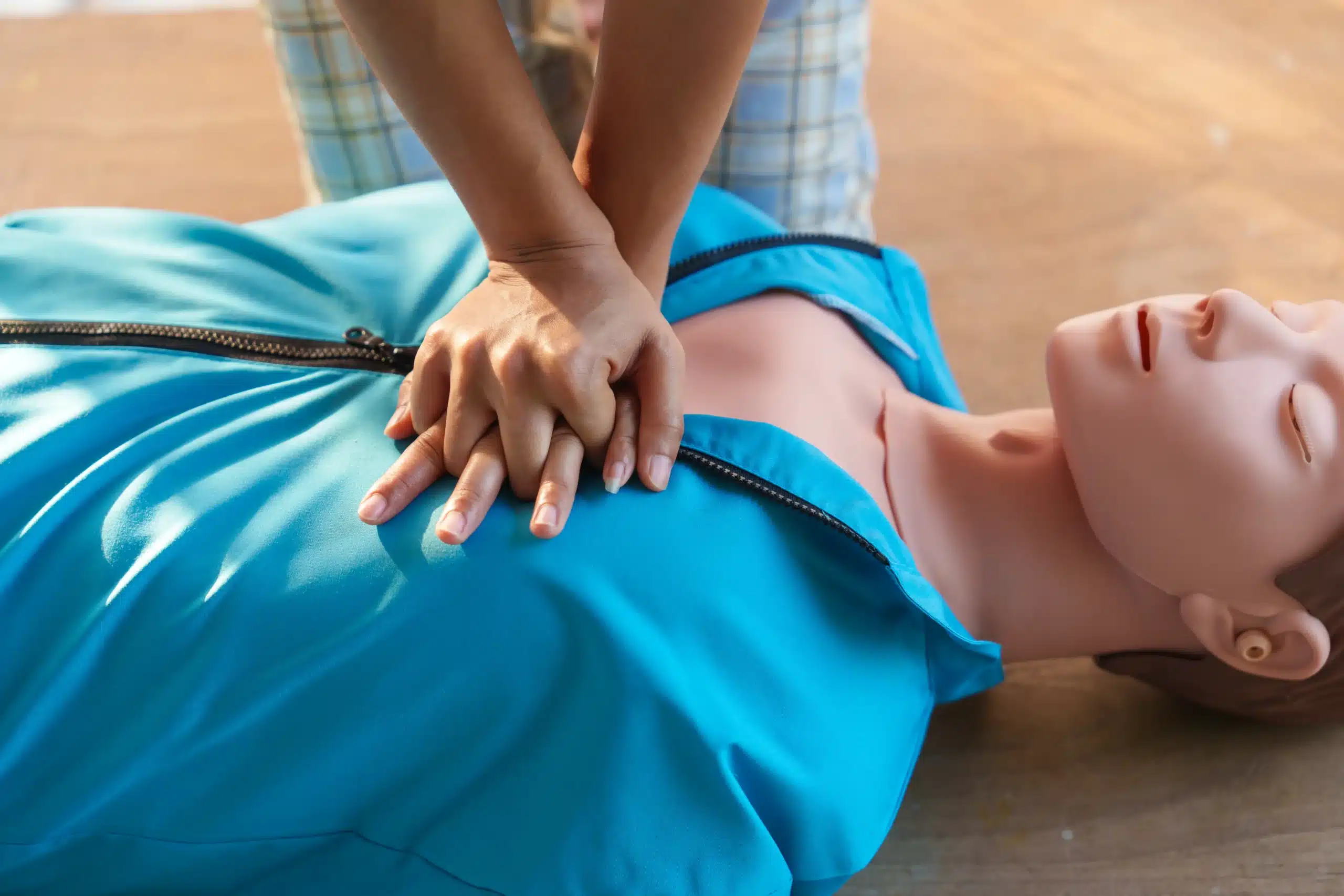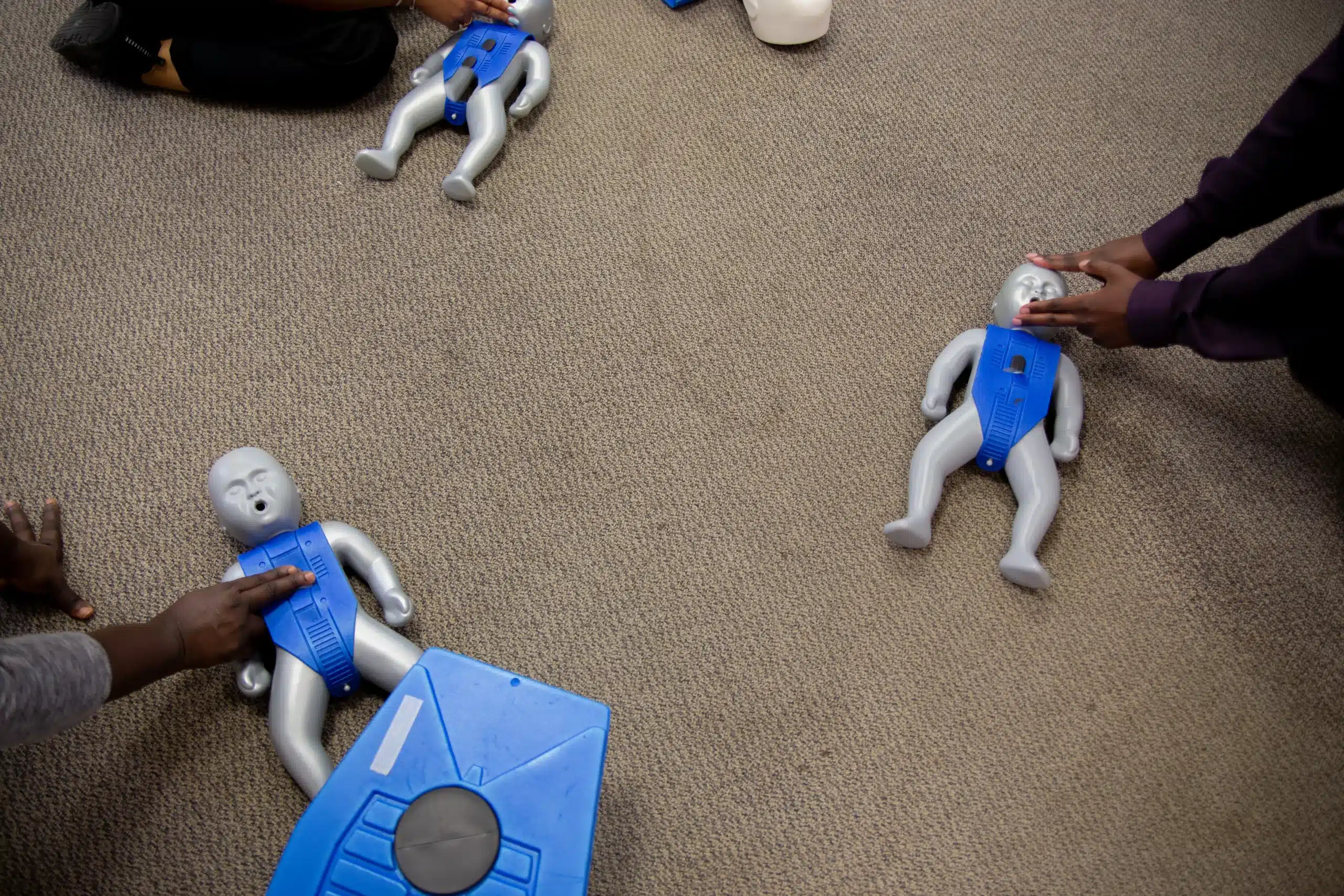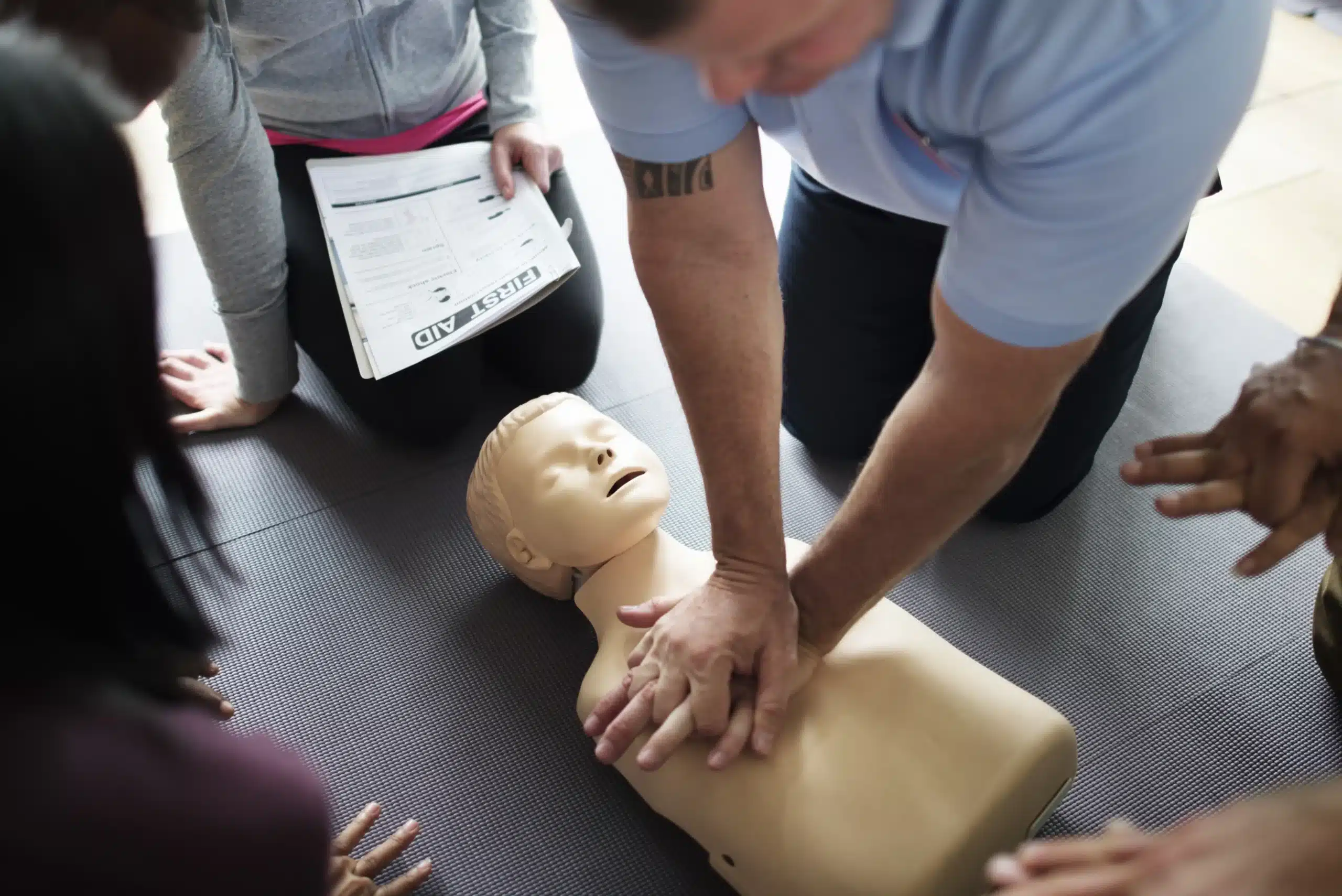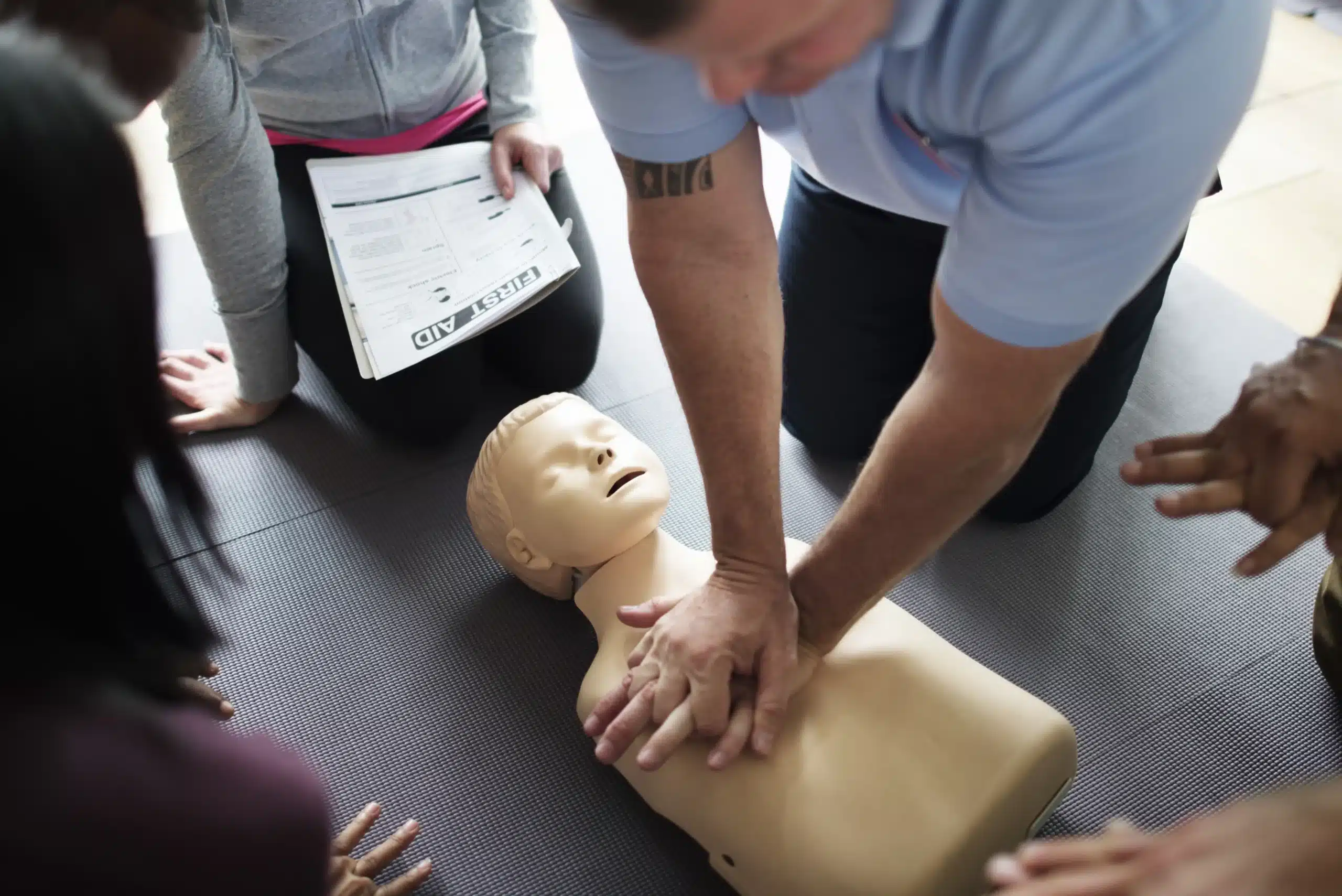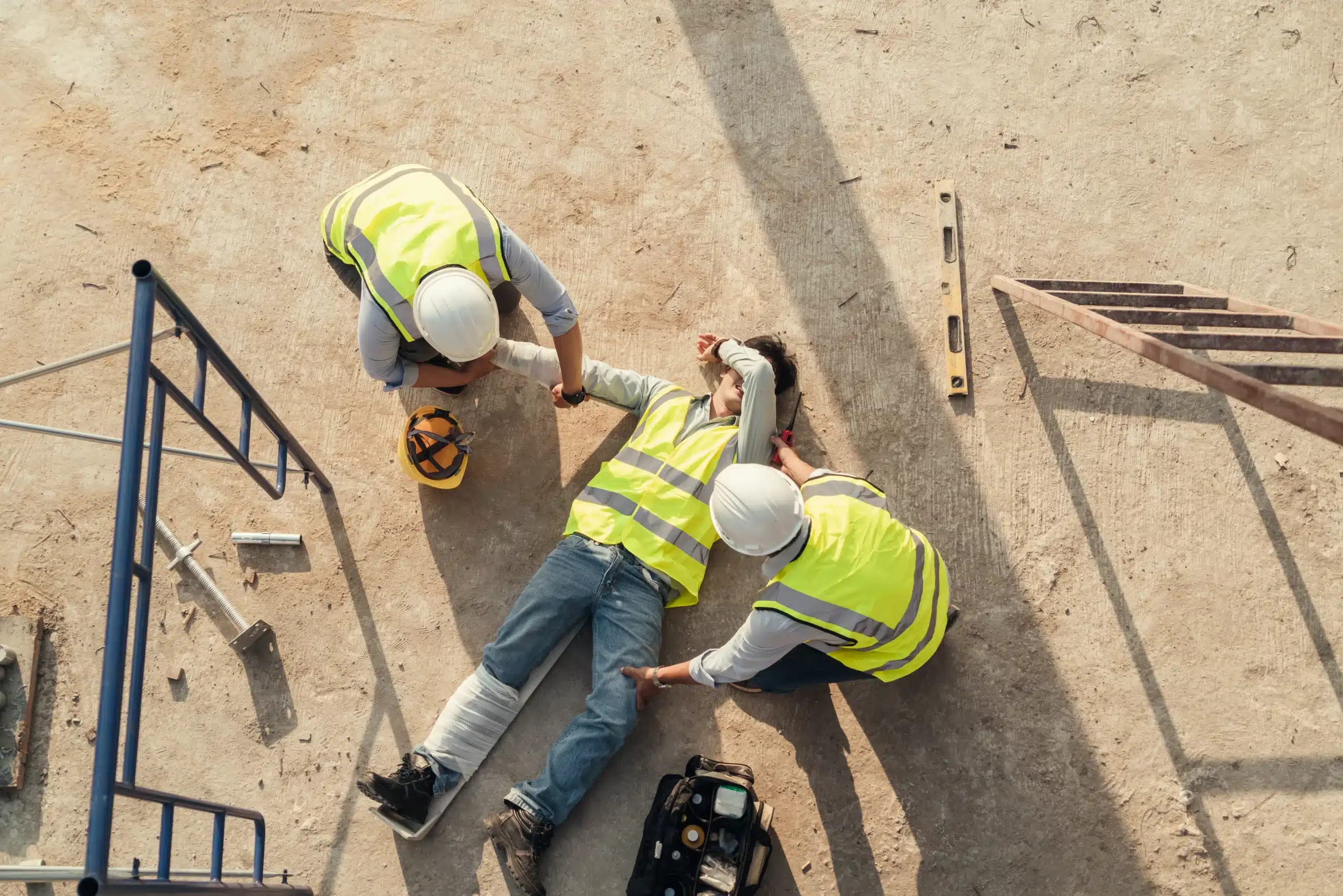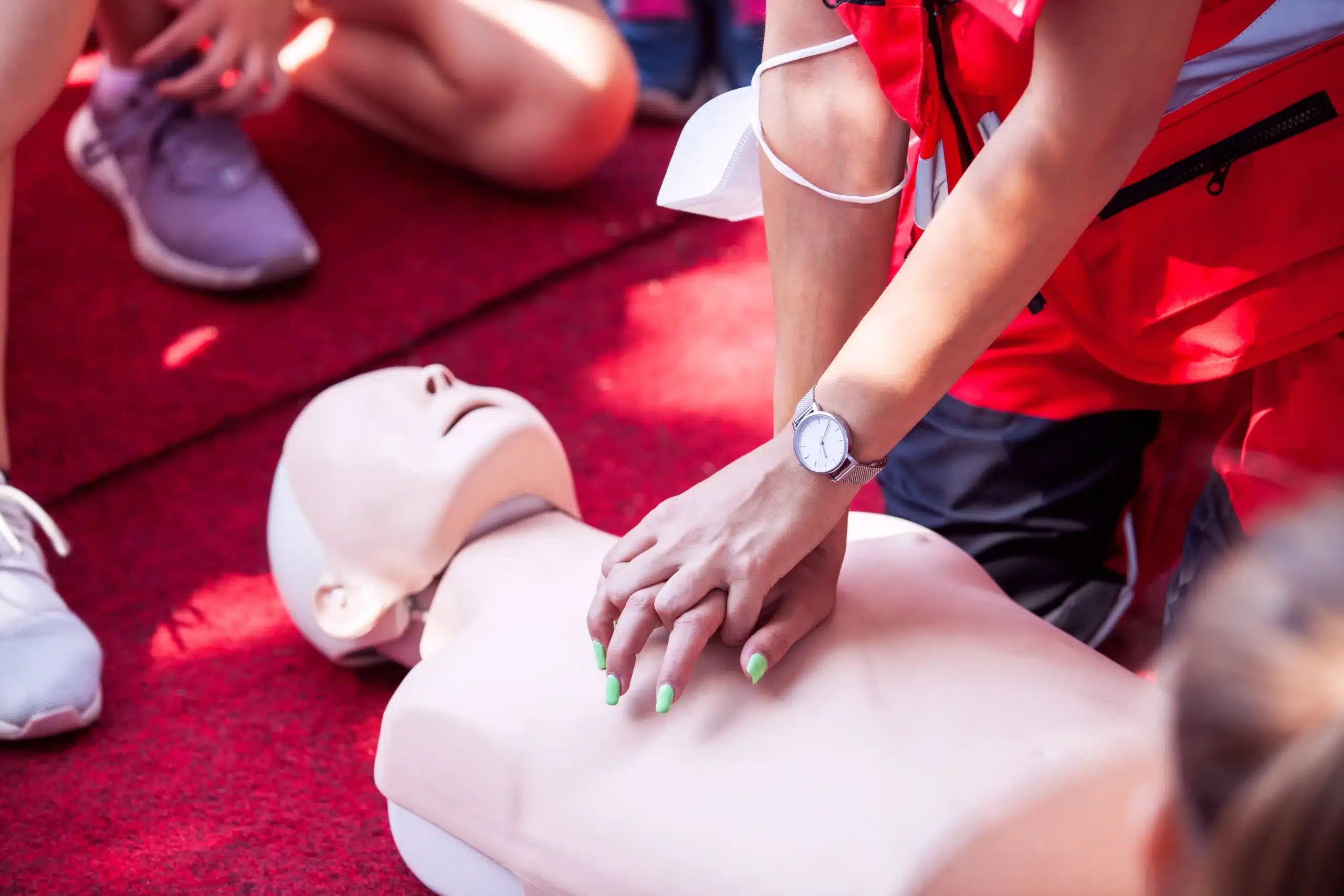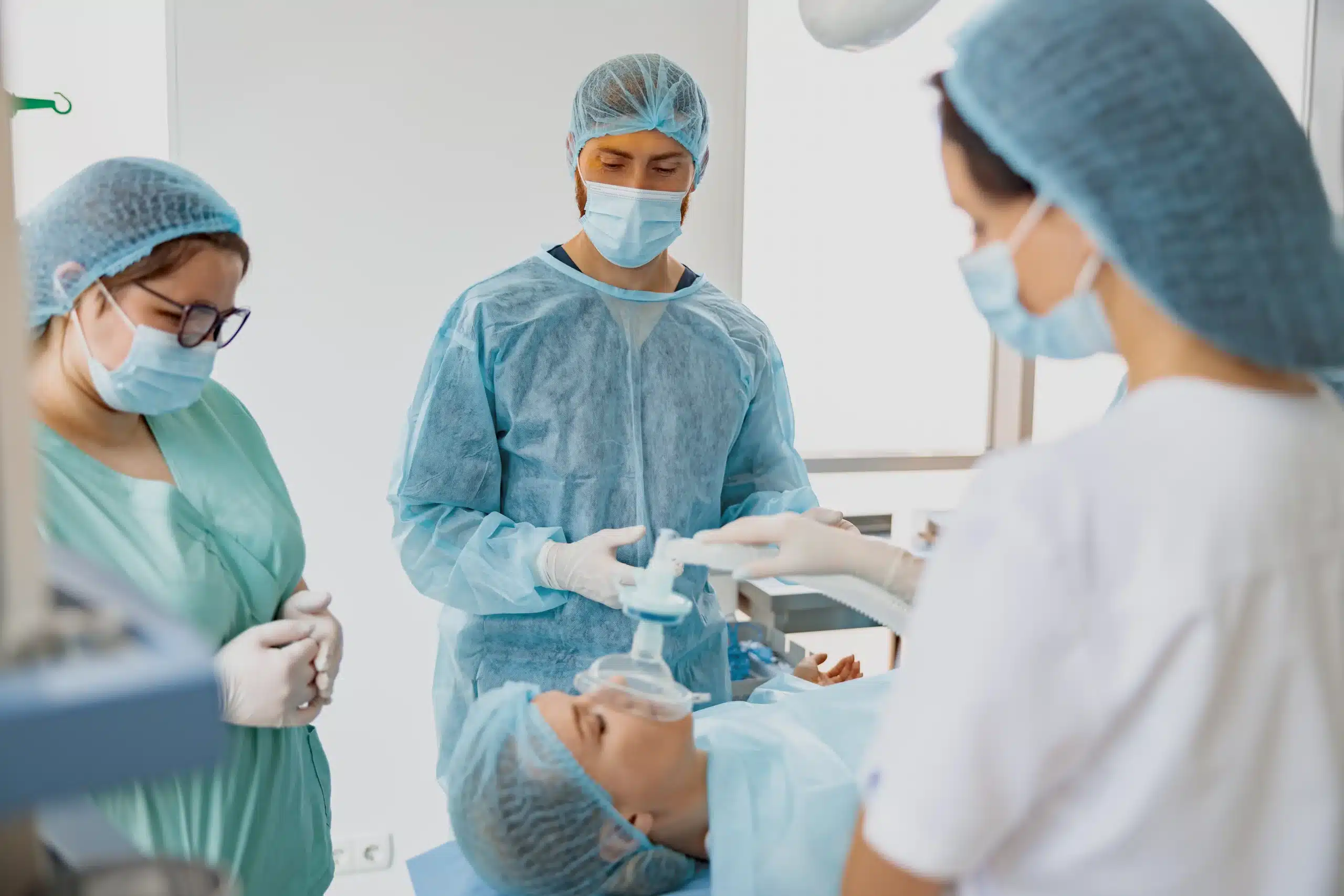In a medical emergency, seconds can matter. CPR training equips you with the skills to respond quickly and effectively, potentially making the difference between life and death. This guide is your go-to resource for CPR training in Palo Alto. We’ll cover everything from basic CPR and first aid to more advanced certifications like ACLS and PALS. Whether you’re a medical professional needing to renew your certification or a concerned parent wanting to learn essential life-saving skills, we’ll help you find the right course. We’ll also explore the various CPR training options available in Palo Alto, discuss costs and schedules, and provide valuable insights into the certification process. Let’s get started and empower you to make a difference.
Key Takeaways
- Find the right CPR class for you: Explore options ranging from basic CPR and first aid to specialized certifications like BLS, ACLS, and PALS. Consider factors like your profession, personal needs, and schedule when selecting a course.
- CPR training is an investment in yourself and your community: Learning CPR equips you with the skills to potentially save a life and contribute to a safer environment for everyone. Take advantage of resources like group discounts and convenient online learning platforms.
- Maintain your skills and stay certified: CPR guidelines evolve, so regular recertification is essential. Refresh your knowledge and skills every two years to ensure you’re prepared to respond effectively in an emergency.
What is CPR Training?
CPR (Cardiopulmonary Resuscitation) training gives you the skills to respond to medical emergencies like cardiac arrest or respiratory failure. These courses teach essential techniques, including chest compressions, rescue breathing, and how to use an Automated External Defibrillator (AED). Learning CPR can quite literally double or triple a victim’s chance of survival, according to the American Heart Association.
CPR training isn’t one-size-fits-all. It ranges from Basic Life Support (BLS) for the general public to more advanced certifications like Advanced Cardiac Life Support (ACLS) and Pediatric Advanced Life Support (PALS) for healthcare providers. Many programs also include first aid training, which is invaluable in various emergency situations. Whether you’re a parent, teacher, coach, or medical professional, CPR training empowers you to act confidently and effectively in a crisis. Redwood City CPR Classes offers a range of courses, including BLS, ACLS, and PALS certifications.
CPR Course Options
Choosing the right CPR course depends on your specific needs and career goals. This section outlines the various CPR certifications available in Palo Alto through Redwood City CPR Classes, helping you determine the best fit.
CPR and First Aid
This comprehensive course equips you with the skills to respond to both life-threatening emergencies and common injuries. You’ll learn adult, child, and infant CPR, AED use, and essential first aid techniques for various situations, from minor cuts and burns to more serious injuries. This combined training provides a well-rounded skill set for anyone looking to be prepared.
Basic Life Support (BLS)
The BLS course is designed for healthcare providers and other professionals who need to perform CPR and other lifesaving skills in a professional setting. It covers high-quality CPR for adults, children, and infants, along with team dynamics and AED use. Redwood City CPR Classes offers the innovative RQI program, a convenient way for medical professionals to obtain their American Heart Association BLS certification.
Advanced Cardiovascular Life Support (ACLS)
ACLS certification goes beyond basic CPR. Designed for healthcare professionals who manage cardiopulmonary arrest or other cardiovascular emergencies, this advanced course covers airway management, intravenous access, and pharmacology related to resuscitation.
Pediatric Advanced Life Support (PALS)
Specifically for healthcare providers who treat infants and children, the PALS course focuses on the specialized skills needed to respond to pediatric emergencies. It covers pediatric assessment, respiratory management, and defibrillation protocols for young patients.
Hands-Only CPR
While not a certifying course, Hands-Only CPR training teaches essential chest compression techniques for individuals hesitant to perform full CPR. This simplified approach can still make a significant difference during sudden cardiac arrest. Check with the Palo Alto Fire Department or other local organizations for free training opportunities.
CPR Training Costs & Value
CPR training is an investment in lifesaving skills, and understanding the associated costs and long-term value is essential. While prices vary, the ability to provide CPR in a critical situation is priceless. This section breaks down the different pricing structures and highlights the enduring benefits of CPR certification.
Individual Course Pricing
The cost of individual CPR courses in Palo Alto depends on several factors, including the type of course, the level of certification, and the training provider. More specialized courses, such as ACLS or PALS, typically have higher costs due to the advanced training involved. Contacting various providers, like Redwood City CPR Classes, directly is always recommended to compare pricing and find a course that fits your budget.
Group & Student Discounts
Many CPR training providers offer discounts for group bookings and students. This can be a smart option for families, community groups, or businesses looking to train multiple people. Group discounts often lower the per-person cost significantly. If you are a student, inquire about potential student discounts to make the training more affordable.
Package Deals
Some training centers offer package deals that combine multiple certifications or courses. For example, a package might include CPR, First Aid, and AED training at a reduced overall price. These packages can be a cost-effective way to gain a comprehensive set of lifesaving skills.
Certification’s Long-Term Value
The value of CPR certification extends far beyond the initial cost. A valid CPR certification can open doors to various job opportunities, especially in healthcare, education, and fitness. It also provides peace of mind, knowing you have the skills to potentially save a life. For medical professionals, the RQI program offers an efficient way to maintain certifications. Ultimately, the confidence and competence you gain through CPR training are invaluable.
Class Schedules & Locations
Finding the right CPR class means finding a schedule and location that works for you. Whether you need a weekend course or an evening session, flexible options are available throughout the area. Let’s explore what you can expect.
Flexible Class Times
CPR training shouldn’t disrupt your already busy schedule. Many providers understand this and offer classes daily, often spanning from early morning to late evening. This flexibility makes it easier to fit training into your workday or personal time. Check with specific providers like Redwood City CPR Classes for their most up-to-date schedule. They even offer weekend and evening classes to accommodate busy schedules.
Convenient Training Centers
Training centers are strategically located throughout the area, offering convenient access for students in and around Palo Alto. Redwood City CPR Classes offers training in Redwood City, serving surrounding cities like Palo Alto, Menlo Park, and more. Check their website for specific addresses and details.
Online vs. In-Person Options
Many CPR courses now blend online learning with in-person skills sessions. This hybrid approach allows you to study the cognitive components of the course at your own pace through online modules, often using programs like RQI. This blended format offers a streamlined, efficient path to certification, especially beneficial for busy professionals. You’ll then complete a hands-on skills check and testing session in person.
In-Home & Corporate Training
For larger groups or those who prefer training in a more familiar setting, some providers offer in-home and corporate training options. This is a great option for businesses looking to certify their employees or families wanting to learn together. Contact a provider directly to discuss your specific group training needs. This personalized approach can often be more cost-effective and convenient than individual enrollment.
Certification: Process & Validity
Getting certified in CPR shows you’re ready to help in an emergency. This section explains the certification process, how long it lasts, and how to keep it current.
American Heart Association Certification
Redwood City CPR Classes offers the well-known American Heart Association (AHA) RQI (Resuscitation Quality Improvement) program. This efficient program helps medical professionals around Palo Alto earn their AHA BLS, ACLS, and PALS certification cards. The RQI program focuses on consistent, high-quality CPR skills, making sure you’re prepared for real-life emergencies.
Certification Validity
AHA CPR certification is good for two years. This timeframe highlights how important it is to stay updated on the latest CPR guidelines and techniques. Regular practice and renewal keep your skills sharp and in line with current best practices.
Renew Your Certification
To maintain your CPR credentials, renew your certification every two years. Refresher courses cover any updated guidelines and offer valuable hands-on practice. This ongoing training keeps your certification current and boosts your confidence for emergencies. Redwood City CPR Classes offers convenient renewal courses to fit your schedule.
Your CPR Training Experience
CPR training is designed to be straightforward, accessible, and empowering. Here’s what you can expect at Redwood City CPR Classes:
Course Structure & Duration
Our CPR courses blend theory and practical application. Expect a combination of lectures, demonstrations, and hands-on practice. We offer a variety of course times throughout the day to accommodate busy schedules. Check our website for the most up-to-date class schedules.
Hands-On Practice & Skill Development
The core of CPR training lies in hands-on learning. You’ll work with CPR training mannequins to practice chest compressions, rescue breaths, and other essential techniques. Our instructors will guide you through each step, ensuring you develop the muscle memory and confidence to perform CPR effectively. Our group classes offer a supportive environment to practice and learn alongside your peers.
Written Assessments
Depending on the course, there might be a written assessment to evaluate your understanding of CPR principles. For healthcare professionals seeking BLS, ACLS, or PALS certification, our innovative RQI program offers a streamlined and efficient path to certification.
Physical Requirements
CPR involves physical exertion. While most people can participate, it’s important to be aware of the physical demands. If you have any physical limitations, please discuss them with your instructor. Rescheduling is always an option if needed. We want to ensure your training experience is both effective and comfortable.
Choose the Right CPR Training in Palo Alto
Finding the right CPR training in Palo Alto depends on your individual needs and preferences. Whether you’re a healthcare provider, a concerned parent, or just want to be prepared, several excellent options are available. Let’s explore some of the leading providers:
Redwood City CPR Classes
Redwood City CPR Classes offers a comprehensive range of American Heart Association (AHA) certified courses, including BLS, ACLS, PALS, and First Aid. They also feature an innovative RQI program for medical professionals seeking efficient recertification. Their focus on small classes and hands-on training creates a supportive learning environment. Redwood City CPR Classes serves Palo Alto, Redwood City, and Menlo Park. Take advantage of their group discounts for families or businesses and their low price guarantee.
Stanford Health Care
Stanford Health Care provides CPR training tailored for both healthcare professionals and the community. Their courses emphasize the latest techniques and follow AHA guidelines. Explore their program offerings.
Palo Alto Medical Foundation
The Palo Alto Medical Foundation (PAMF) offers CPR and first aid training suitable for various skill levels, from healthcare providers to community members. Their comprehensive approach covers essential life-saving techniques. Learn more about their courses.
Bay Area CPR
Bay Area CPR offers a flexible schedule of CPR classes, including BLS, ACLS, and PALS. Their courses cater to individuals and organizations. Visit the Bay Area CPR website for details on classes in Palo Alto.
Palo Alto Fire Department
For those seeking basic CPR skills, the Palo Alto Fire Department offers free Hands-Only CPR classes. These classes empower community members to respond effectively in emergencies. Find class schedules and information.
In Home CPR
In Home CPR brings the training to you, offering CPR, BLS, First Aid, and ACLS certification classes at your home or business. This convenient option is ideal for busy individuals or groups. Explore their services.
Prepare for Your CPR Course
Getting ready for your CPR class is straightforward. Knowing what to expect and how to prepare can make your learning experience even better. Here’s a quick rundown:
Required Materials
Redwood City CPR Classes provides all the essential materials for your course, including manuals and practice equipment. Many CPR classes, including the convenient RQI program offered by Redwood City CPR Classes, provide pre-course materials. This allows you to familiarize yourself with the content before class. You won’t need to purchase anything extra.
Pre-Course Study Resources
While not mandatory, reviewing some pre-course resources can give you a head start. Classes often include online components (like the RQI program) and in-person skills testing. Reviewing some pre-course study materials can be helpful. Even a quick overview can make the in-class learning process more efficient.
What to Wear & Bring
Comfort is key! Wear comfortable clothing that allows for a full range of motion, as you’ll be actively participating in hands-on practice. Bring a reusable water bottle to stay hydrated throughout the class. That’s all you need—we’ve got the rest covered.
CPR Training Benefits by Profession
CPR training offers distinct advantages across various professions. Whether you’re a healthcare provider, an educator, a fitness instructor, or simply a concerned citizen, understanding CPR can empower you to make a difference in critical situations.
Healthcare Professionals
For healthcare professionals in Palo Alto, staying up-to-date on the latest resuscitation techniques is crucial. The American Heart Association RQI (Resuscitation Quality Improvement) program, offered by Redwood City CPR Classes, is a highly effective way to maintain your BLS, ACLS, and PALS certifications. This program helps healthcare providers deliver high-quality patient care and improve outcomes. It’s recognized as a convenient and efficient method for obtaining your certifications.
Educators & Childcare Providers
Working with children brings a unique set of responsibilities, especially when it comes to safety. The Pediatric First Aid AED CPR class is indispensable for licensed daycare and preschool teachers in California. This training meets the EMSA’s certification requirements, ensuring you’re prepared to handle emergencies involving children. Knowing how to respond quickly and effectively can provide peace of mind and create a safer environment for the children in your care.
Fitness Instructors & Coaches
As a fitness instructor or coach, you’re dedicated to helping people achieve their fitness goals. Part of that dedication involves ensuring their safety. CPR and First-Aid training equips you with the skills to respond to medical emergencies that may arise during physical activity, from minor injuries to sudden cardiac events. This knowledge allows you to create a safer workout environment and potentially save lives.
General Public & Parents
CPR training isn’t just for professionals; it’s a valuable skill for everyone. Knowing CPR can empower you to respond effectively in emergencies, whether at home, in public, or at work. Group CPR training in Palo Alto offers a supportive and interactive learning environment for individuals, families, and community groups. Learning CPR alongside friends or family members can be a rewarding experience and strengthen your community’s overall preparedness.
Common CPR Training FAQs
This section addresses some of the most frequently asked questions about CPR training. We hope this information clarifies any uncertainties you may have.
Physical Demands of CPR
CPR training involves hands-on practice and physical activity. You’ll learn proper techniques for chest compressions and rescue breaths, which can require some exertion. If you have any physical limitations, discuss them with your instructor before your CPR class. They can offer modifications or alternative approaches to ensure you can fully participate and gain the necessary skills. Rescheduling is also an option if needed.
Certification vs. Certificate of Completion
It’s important to understand the difference between a CPR certification and a certificate of completion. A CPR certification, like those offered by the American Heart Association, signifies that you’ve successfully completed a recognized training program and demonstrated proficiency in CPR skills. A certificate of completion simply acknowledges your participation in a course but doesn’t confirm your competency in performing CPR. Make sure you’re signing up for a course that provides the credential you need.
Why Recertify Regularly?
CPR guidelines and best practices are updated periodically to reflect the latest scientific research. Recertification ensures your skills and knowledge are current. Most CPR certifications are valid for two years, after which you’ll need a refresher course to renew your credentials. Regular recertification maintains your skills and demonstrates your commitment to providing high-quality care in emergencies.
Common CPR Misconceptions
Several myths surround CPR. Let’s debunk some of the most common:
- Myth: CPR can only be performed by medical professionals. Fact: Anyone can learn and perform CPR. It’s a life-saving skill accessible to everyone, regardless of medical background.
- Myth: CPR always saves lives. Fact: While CPR significantly increases the chances of survival, it doesn’t guarantee a positive outcome. However, it buys valuable time until professional medical help arrives.
- Myth: CPR restarts a stopped heart. Fact: CPR primarily maintains blood flow and oxygen circulation. It doesn’t restart the heart; it keeps the body functioning until advanced medical intervention can be provided.
- Myth: You might cause serious harm by performing CPR. Fact: The risks associated with not performing CPR far outweigh the potential for harm. In most cases, even imperfect CPR is better than no CPR.
- Myth: CPR should be done until the patient has been revived or medical help arrives. Fact: You should continue CPR until a medical professional takes over, the person shows signs of life, an AED becomes available, or you are too exhausted to continue. It’s crucial to follow the guidelines from your CPR training.
Related Articles
- CPR Training in Menlo Park: A Complete Guide
- CPR Certification in Redwood City: A Complete Guide
- Why CPR is Important in Healthcare – Complete Guide
Frequently Asked Questions
What if I have physical limitations? Can I still take CPR training?
Absolutely! Talk to your instructor beforehand. They can adapt the training to fit your needs, offering modifications or alternative techniques so you can still learn effective CPR. Rescheduling is always an option, too, if needed. The goal is for you to feel comfortable and confident in your abilities.
I’m busy. How long does CPR training take, and are there flexible scheduling options?
CPR course lengths vary depending on the type and level of certification. Many providers offer classes throughout the week, including evenings and weekends, to accommodate busy schedules. Check with specific providers like Redwood City CPR Classes for their most up-to-date schedule and course duration information.
Is there a difference between getting “certified” and receiving a “certificate of completion”?
Yes, there’s a big difference. Certification, such as that provided by the American Heart Association, means you’ve met specific requirements and demonstrated proficiency in CPR skills. A certificate of completion simply shows you attended a course, but it doesn’t confirm your competency. If you need to use CPR professionally, make sure you’re getting a true certification.
How often do I need to renew my CPR certification, and why is it necessary?
Most CPR certifications are valid for two years. Renewing keeps your skills fresh and ensures you’re up-to-date on the latest guidelines, which change periodically based on the latest research. Regular practice and renewal build confidence and help you deliver the most effective care in an emergency.
I’m nervous about performing CPR incorrectly. What if I make a mistake?
It’s normal to feel a little apprehensive, but remember, doing something is always better than doing nothing. The risk of not performing CPR is far greater than the risk of making a mistake. CPR training gives you the skills and confidence to act quickly and effectively, and even imperfect CPR can make a difference while waiting for professional medical help to arrive.
